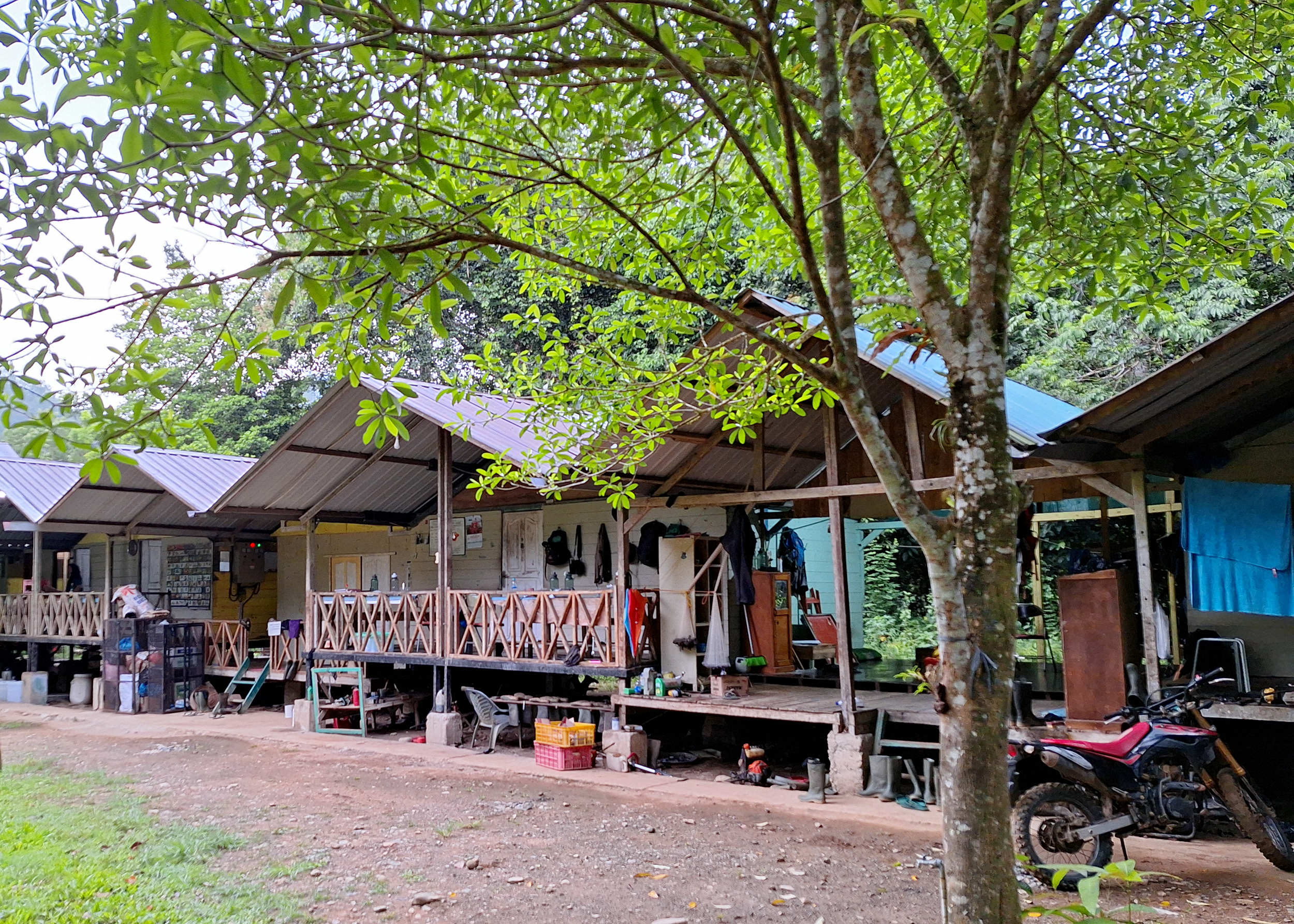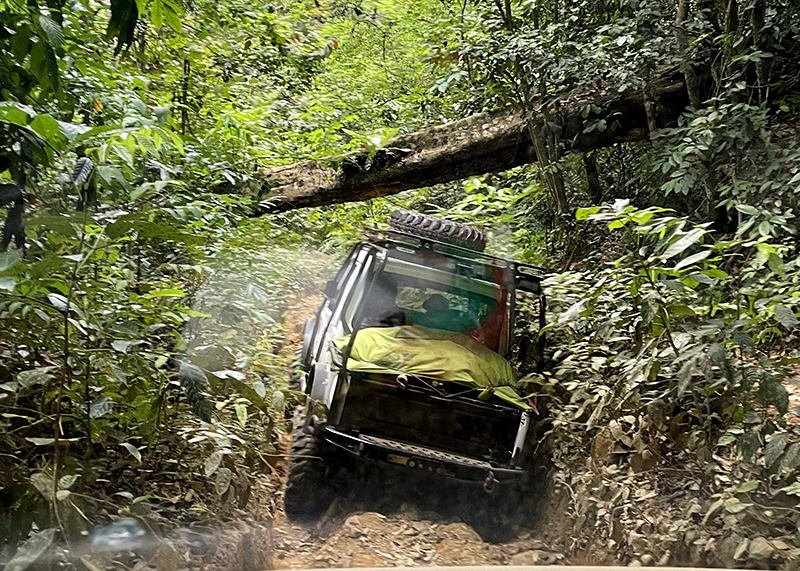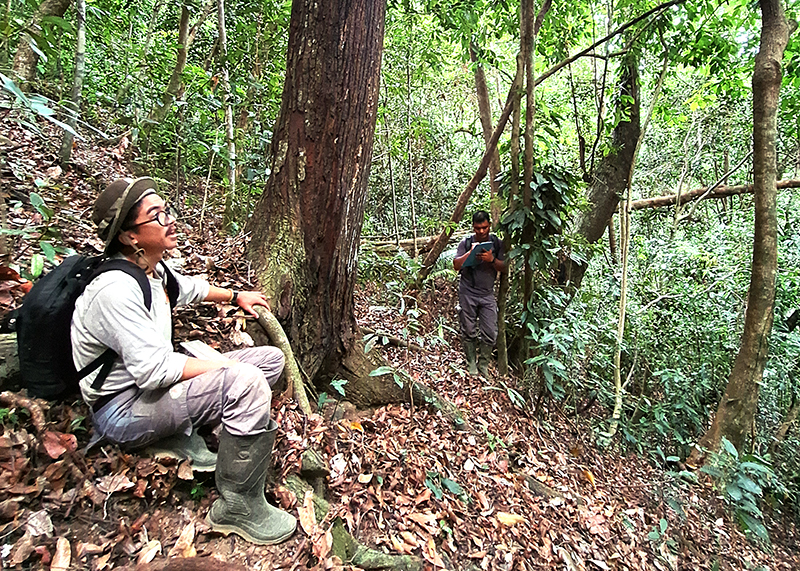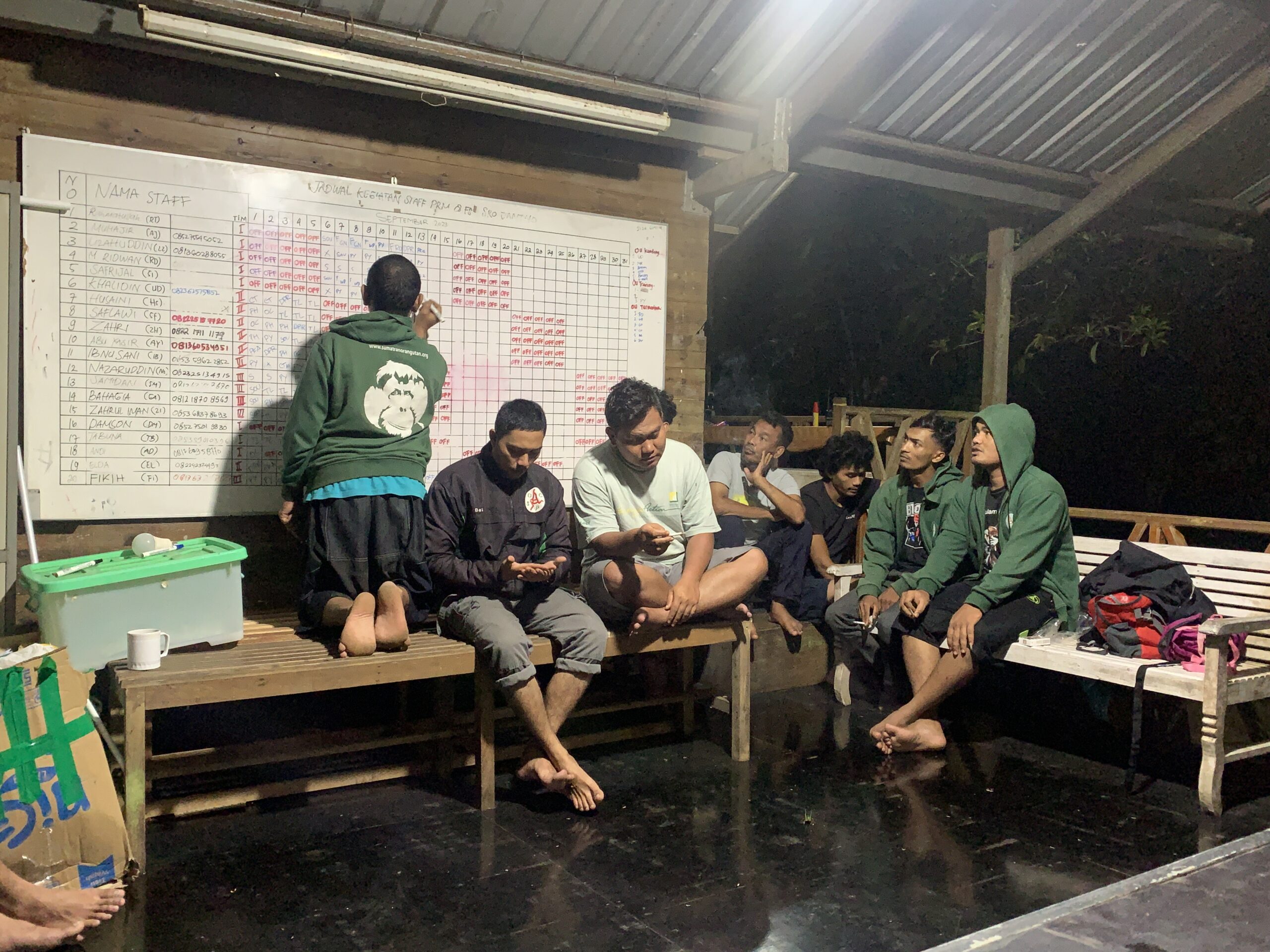24 hours at the Jantho Reintroduction Station

24 hours at the Jantho Reintroduction Station
A row of houses in the middle of the forest
The reintroduction station is located deep in the rainforest, about two exhausting hours’ drive by off-roader from the edge of the Jantho Pine Forest Nature Reserve. And it can take a few hours longer if there is heavy rainfall or if the car breaks down. Around 15 employees are stationed here every day of the year, and each has various tasks. The station consists of seven adjoining houses that were originally provided by the UNHCR for the victims of the 2004 tsunami in Aceh. They are connected at the front by a veranda, and at the back a covered walkway leads to the washing facilities and storage rooms. There are two recreation rooms, a kitchen and a dining room. There are also bedrooms for the team and guests, and a room for the veterinarians. We keep our off-roaders and motorcycles in a couple of sheds. There they can be kept dry while they are being serviced. Life at the station is very simple. We have electricity and running water, but no internet connection.

10 days shift, 5 days off
In the station, a station manager, a veterinarian, a cook, a driver and a dozen Jantho rangers and staff members who collect scientific data, work in each shift. Most of them are young men from the villages on the edge of the reserve. Because the road is extremely difficult and the day starts early in the morning and only ends at night, the employees always stay in the forest for 10 days before going back to their families for five days. Our veterinarian Rosa is originally from Yojakarta and some others live in Medan. The head of the reintroduction program, Dr. Citrakasih Nente, also visits regularly. Access to the forest is prohibited for the public and entry requires a special permit.

We start at 5 o’clock!
At 5 o’clock, the station awakes, and we have breakfast. Before dawn at 6 a.m., the monitoring team sets off for the orangutan nests to be there in time when the orangutans get up and start moving into the forest. Some animals still spend the night in the enclosures until they get used to building a nest every night.



At the same time, the pre-release team sets out to take care of the orangutans that have only recently arrived. These still live in nearby enclosures and are gradually introduced to their new environment and to the available food. During their 20-day deployment, the Jantho rangers stay in the forest for periods of several days to two weeks. They monitor remote areas and collect data on the behaviour of reintroduced orangutans and on biodiversity. They also keep an eye on possible illegal logging and poaching.

The responsibilities of the veterinarian
Rosa and Khim alternate shifts as the station’s veterinarians. After a morning review, the veterinarian will go back to the station to check on the food reserves for the orangutans. She puts together the feeding plans and carries out various tests on the orangutans’ faeces. The samples are collected by the monitoring team, and they provide important information on the orangutans’ nutrition, digestion and possible infestations of parasites or worms. The veterinarians also analyze the data that has been collected by the monitoring team on the progress in the behaviour of the different animals. Together they decide when the time has come for each animal to be released.

Reporting, board games and movie nights

The post-release team only returns to the station once the orangutans have built their nests. Depending on how far the animals have wandered into the forest, this can be a long journey. That is why the debriefing does not start until 8 p.m. At that time, everyone reports on the events of the day and submits the data that has been collected. Only afterwards people can relax and have some fun: board games, mini-billiards or watching movies are popular activities.




